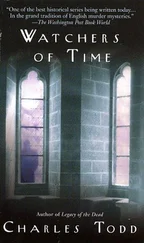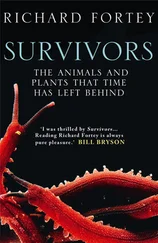Alexander Todd - A Time to Remember
Здесь есть возможность читать онлайн «Alexander Todd - A Time to Remember» весь текст электронной книги совершенно бесплатно (целиком полную версию без сокращений). В некоторых случаях можно слушать аудио, скачать через торрент в формате fb2 и присутствует краткое содержание. Город: Cambridge, Год выпуска: 1983, ISBN: 1983, Издательство: Cambridge University Press, Жанр: Химия, Биографии и Мемуары, на английском языке. Описание произведения, (предисловие) а так же отзывы посетителей доступны на портале библиотеки ЛибКат.
- Название:A Time to Remember
- Автор:
- Издательство:Cambridge University Press
- Жанр:
- Год:1983
- Город:Cambridge
- ISBN:0 521 25593 7
- Рейтинг книги:3 / 5. Голосов: 1
-
Избранное:Добавить в избранное
- Отзывы:
-
Ваша оценка:
- 60
- 1
- 2
- 3
- 4
- 5
A Time to Remember: краткое содержание, описание и аннотация
Предлагаем к чтению аннотацию, описание, краткое содержание или предисловие (зависит от того, что написал сам автор книги «A Time to Remember»). Если вы не нашли необходимую информацию о книге — напишите в комментариях, мы постараемся отыскать её.
A Time to Remember — читать онлайн бесплатно полную книгу (весь текст) целиком
Ниже представлен текст книги, разбитый по страницам. Система сохранения места последней прочитанной страницы, позволяет с удобством читать онлайн бесплатно книгу «A Time to Remember», без необходимости каждый раз заново искать на чём Вы остановились. Поставьте закладку, и сможете в любой момент перейти на страницу, на которой закончили чтение.
Интервал:
Закладка:
After just about a year in Cambridge the war came to an end and the pace of our life quickened. We became finally settled as a family by moving into our own permanent home in Barrow Road in the late spring of 1945 and in the summer of the following year on 25 June our daughter Hilary was born. But even before then the influx of overseas students - soon to become a flood - had begun and I found myself becoming increasingly involved in a variety of activities in Cambridge, London and overseas. Throughout all of these my researches were continuing, and indeed expanding, as a result of the increasing number of young chemists seeking to join our school. It is not easy to incorporate the progress of research in a narrative of one's career, and I think it will be simplest if, at this point, I set down a brief outline of the development of my major research interests over the years in a separate chapter.
5. Chance and design in research. The road to vitamins, coenzymes and DNA
During the wartime period in Manchester I was able, despite other preoccupations (and the need to attend far too many committees which multiplied alarmingly in the university), to make, with my colleagues, surprisingly good progress with research aimed towards nucleotide coenzymes. Thus, we devised new methods of phosphorylation and began to understand the chemistry of the organic phosphates and polyphosphates, and we produced new methods of synthesis, not merely for pyrimidines and purines, but for their glycosides (the nucleosides). Alongside research, however, we were making some notable improvements in laboratory equipment. Ralph Gilson was quite remarkable for his appreciation of laboratory needs, and for his skill in the design of new equipment to meet them. In the exercise of this talent he had my full support, and we turned it very much to our advantage in the following way. Ralph would design and build a prototype; he would then offer the design to one of the scientific equipment firms which would be allowed to take up and market it, with the proviso that it first supplied us with what we needed, and that, thereafter, when we required a particular item we would have priority over other customers. This worked excellently, and so we developed new evaporators, shakers, drying pistols, etc. and, in due course, also electromagnetically stirred autoclaves for pressure hydrogenation and other reactions. Most of these came into general laboratory use in due course, but we were normally first in the field and so, even during the war years, we became perhaps the best equipped chemical laboratory in Britain.
In addition to work for the Chemical Defence Research Department we had a number of other projects in our laboratories in Manchester which were regarded as being 'of national importance'. These included work on antimalarial and other drugs, but one of the most interesting was an attempt to isolate and identify the so-called 'hatching factor' for the nematode Heterodera rostochiensis (the potato eelworm). This parasite attaches itself to the growing roots of the potato plant and causes the disease known as potato sickness; it is found all over Europe, and in Britain alone is responsible for losses amounting to millions of pounds annually. The fertilised female worm remains attached to the potato root, its body swells up and, with the death of the worm, the posterior portion drops off into the soil as a leathery cyst containing some hundreds of larvae. The cysts lie dormant but viable in the soil until potatoes are planted again in their neighbourhood, when the larvae emerge and attack the potato rootlets. The reason for this hatching is that the growing potato roots secrete into the soil a substance (or substances) which specifically triggers the hatching of the encysted worms. My attention was drawn to this fascinating problem by Professors Leiper and Raistrick of London, who had made some preliminary examination of the problem to ascertain its feasibility; they had found that the mysterious hatching factor was produced by other solanaceous plants so that tomato plants could be used as a much more convenient source than potatoes, and had devised a rather crude but apparently effective biological assay. They decided to abandon the project when war broke out and I was invited to take it up. This I did and, with the help of Dr C. T. Calam who had been doing the preliminary work in London with Raistrick, I got the project under way in Manchester. We failed to isolate the hatching factor in Manchester and the same lack of success attended further efforts I made later in Cambridge with my colleague A. W. Johnson. We were, however, able to establish that we were dealing with a relatively small molecule or molecules (< 1000 in molecular weight and probably around 500) containing an unsaturated lactone group, but we could not isolate it. True, it was not very stable, but the real reason for our failure was twofold. Firstly, fractionation procedures such as chromatography and countercurrent distribution were insufficiently advanced, and, secondly, our biological test reached its limit when we were dealing with fractions active in dilutions of about 1 in 10^6, and which were evidently still heterogeneous. It is perhaps only fair to say that our isolation work in Manchester was brought to a standstill in 1944 when the greenhouses at Cheshunt where we grew our tomato plants were demolished by a flying bomb. Long before then we had found the physical separation from our tomato cultivation rather tiresome, and we did indeed make one abortive effort to alter it by cultivating another easily grown solanaceous plant - the black nightshade - on a piece of ground owned by the university in Fallowfield. This experiment had to be brought unobtrusively to an end about a year after we started it, when black nightshade, to the concern of local residents, began to appear in gardens all over south Manchester! Our work on the eelworm problem was thus rather disappointing, although we did synthesise a few compounds on the basis of what we knew about it, and some of these had weak hatching activity. It is, however, some consolation that, even today, the factor remains unisolated, and that the efforts of quite a number of investigators in several countries have, in essence, only confirmed what we established about it many years ago. The potato eelworm hatching factor is, of course, only one example of the many fascinating problems presented by the phenomenon of obligate parasitism, and analogous substances influencing the germination of a number of parasitic plants also occur. My colleague, Dr R. Brown, who was a lecturer in botany in Manchester and subsequently became professor of that subject in Edinburgh, was interested in, and drew my attention to, the probable existence of specific germination factors for Orobanche and Striga species secreted by the host plants upon whose roots they battened. We did have a look at these problems later on in Cambridge, but again had little success. The first breakthrough in this general field of research did not come until 1971, when workers in the United States succeeded in isolating a small amount of the Striga germination factor to which they gave the name strigol and established its structure by X-ray crystallographic analysis. Interestingly enough, its molecule has some of the structural features which we suspect occur in the eelworm hatching factor.
Another piece of work which led to no useful result (as far as I was concerned at least) was that which we carried out on blood anticoagulants. During my first year in Manchester I was asked by my friend C. H. Best of Toronto if I would have a look at heparin, which the Canadians were producing at their Connaught Laboratories. He sent over one of his technicians (Arthur Charles) with a modest supply of material so that we could do some work on it, but we had no time to do much with it before war broke out and Charles had to return to Canada. I would probably have paid no further attention to the problem, since I really was not very interested in carbohydrate chemistry, had it not been for the panic about spies and Nazi sympathisers which occurred following the German invasion of France. All German subjects, including many Jewish refugees, were suddenly rounded up and interned (quite arbitrarily as far as I could see). One victim of this was my valued colleague and friend Dr Anni Jacob. She was arrested, put for a time in Holloway Prison in London, and then moved to an internment camp at Port Erin, Isle of Man. This was a tragic waste of scientific talent at a time when this country needed all it could find, and was equally tragic from a human point of view, since Anni was one of those Germans who, although without any Jewish ancestry, nevertheless elected to leave her country rather than live there under Hitler. I had a long battle with the Home Office before I finally obtained her release, but, between times, in an effort to relieve the boredom of her stay at Port Erin, I arranged with the Director of the Marine Biological Station there that she could collect and process various types of seaweed, and, in collaboration with me in Manchester, look for possible blood anticoagulants in them (it was known that the Irish seaweed product carragheen had anticoagulant properties). Although we carried on some of this work for a short time after Anni was released, it really did not lead us anywhere and we abandoned it; but it probably helped her to retain her sanity during her internment. While we were still in Manchester Anni married Dr Juan Madinaveitia, who had been associated with me in Edinburgh, London and Manchester, and who was himself a refugee from the Franco regime in Spain. Madinaveitia subsequently joined I.C.I. (Pharmaceuticals) Ltd and he and Anni settled down happily in Cheshire and brought up a family.
Читать дальшеИнтервал:
Закладка:
Похожие книги на «A Time to Remember»
Представляем Вашему вниманию похожие книги на «A Time to Remember» списком для выбора. Мы отобрали схожую по названию и смыслу литературу в надежде предоставить читателям больше вариантов отыскать новые, интересные, ещё непрочитанные произведения.
Обсуждение, отзывы о книге «A Time to Remember» и просто собственные мнения читателей. Оставьте ваши комментарии, напишите, что Вы думаете о произведении, его смысле или главных героях. Укажите что конкретно понравилось, а что нет, и почему Вы так считаете.










